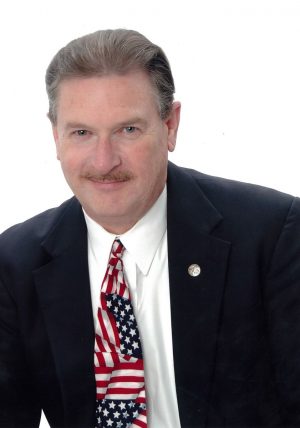Leaping and Bible Inspiration
Leaping and Bible Inspiration
One of the marvelous confirmations of the inspiration of the Bible is the existence of hundreds of prophecies in which the writers predicted events far into the future from their day. This phenomenon is particularly fascinating with regard to the “Messianic” prophecies, i.e., those that anticipated the coming of the Messiah, Jesus the Christ.
One such prophecy uttered by the “Messianic prophet” Isaiah is the one found in chapter 35 of his oracles. Specifically, consider the following:
Then the eyes of the blind shall be opened,
and the ears of the deaf shall be unstopped.
Then the lame shall leap like a deer,
and the tongue of the dumb sing.
For waters shall burst forth in the wilderness,
and streams in the desert (35:5-6).
This passage, believed to have been uttered in the 8th century B.C., predicted that in the Messianic age to come, i.e., the Christian era, as a result of the miraculous empowerment that would accompany the initial introduction of the Gospel, the blind, the deaf, the lame, and the dumb (“mute,” NASB) would experience healing.
Interestingly, one would expect as a result of their healing, the blind would be able to see and the deaf would be able to hear. And, comparably, one might expect the prophet to indicate that the lame would walk and the dumb would speak. However, instead, the dumb would not merely talk; they would sing. And the lame would not merely walk; they would “leap like a deer.” This latter detail is intriguing. The prophet might merely have been speaking figuratively, simply highlighting the concept that the lame would no longer be confined to his immobility.
However, when one turns to the New Testament and reads the inspired account of the launching of Christianity in the form of the establishment of Christ’s church after His ascension into heaven—a fact which He fully predicted (Matthew 16:18-19; 18:17; 26:29; Acts 1:3)—one sees the unfolding of the presentation of the Gospel to the Jerusalem Jews. Luke was given the responsibility of reporting for all time the first 30 years of the history of Christianity. Early in his record, he reports an incident that confirms Isaiah’s prophetic prediction:
Now Peter and John went up together to the temple at the hour of prayer, the ninth hour. And a certain man lame from his mother’s womb was carried, whom they laid daily at the gate of the temple which is called Beautiful, to ask alms from those who entered the temple; who, seeing Peter and John about to go into the temple, asked for alms. And fixing his eyes on him, with John, Peter said, “Look at us.” So he gave them his attention, expecting to receive something from them. Then Peter said, “Silver and gold I do not have, but what I do have I give you: In the name of Jesus Christ of Nazareth, rise up and walk.” And he took him by the right hand and lifted him up, and immediately his feet and ankle bones received strength. So he, leaping up, stood and walked and entered the temple with them—walking, leaping, and praising God. And all the people saw him walking and praising God. Then they knew that it was he who sat begging alms at the Beautiful Gate of the temple; and they were filled with wonder and amazement at what had happened to him (Acts 3:1-10).
Observe that the lame man was told by Peter to “rise up and walk.” The lame man walked alright, but Luke meticulously reports that the man also “leaped.” This minute detail cannot be coincidental. By divine assistance, Isaiah peered across more than seven centuries into the first century A.D. to see an unnamed man, who had been lame from birth, leaping up as a beneficiary of the confirmatory (Mark 16:20)1 miracles that accompanied the advent of Christianity, “walking, leaping, and praising God.” How in the world could a mere man have predicted such a minute detail so many centuries in advance? He could not have done so on his own ability. Indeed, as Peter stated: “[P]rophecy never came by the will of man, but holy men of God spoke as they were moved by the Holy Spirit” (2 Peter 1:21).
Endnotes
1 Dave Miller (2003), “Modern-Day Miracles, Tongue-Speaking, and Holy Spirit Baptism: A Refutation—EXTENDED VERSION,” Apologetics Press, https://apologeticspress.org/APContent.aspx?category=11&article=1399&topic=293.

REPRODUCTION & DISCLAIMERS: We are happy to grant permission for this article to be reproduced in part or in its entirety, as long as our stipulations are observed



0 Comments:
Post a Comment
<< Home